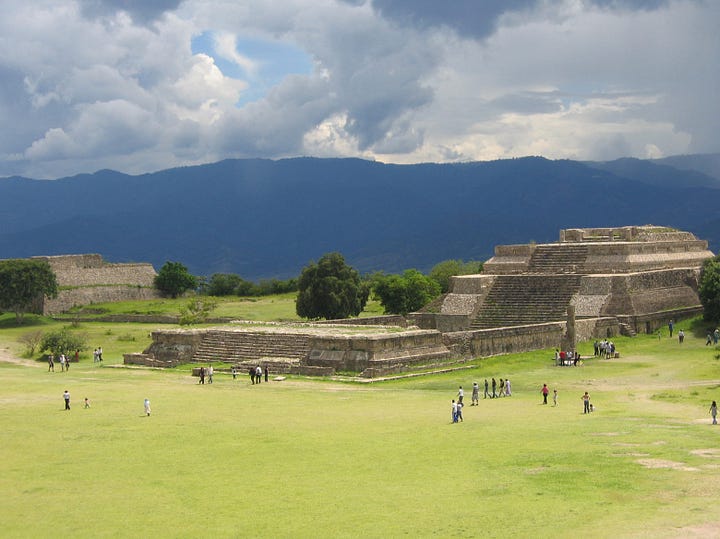Oaxaca (Wah-Haca) is a significant location for many reasons, but the chief one (as far as my suspicions are concerned) is Monte Albán.


The reasons are two-fold. The first is that Oa is pronounced like the French pronunciation of Roy (King) and Xaca is another name for Buddha. The X is pronounced like H, but, until recent times, the X in Mexico was pronounced like S, named after Mesi, which is essentially Messiah. The second is that Albán is similar to the old name for Britain: Albion, which likely comes from the Phoenician alpin, a high mountain, and/or alben, meaning white. Should a Phoenician or Southeast Asian connection emerge beyond dispute, I reckon this location will have something to do with it.
Oaxaca is significant because it is not far from the Isthmus of America, where Wafer encountered the White Indians who spoke a language that had affinity to that of the ancient Irish and Scots (Highland).
To learn more about these subjects, dive into Book 4-6 of Spirit Whirled, but specifically Terminalia for the Mexican gravy (click the image).
All of the monasteries in Oaxaca were built in the 1540s. Santo Domingo was the first of the Dominican monasteries there. Most of the churches seen today were from the 17th & 18th centuries because of the earthquakes destroying the one ones from the 16th century.
According to Thomas Gage (1648), “The building of it [is] the fairest and strongest in all those parts. The walls are so broad that when I was there I saw carts driven upon them loaded with stone.”
Become a member to see the rest of this resource.
Keep reading with a 7-day free trial
Subscribe to Ancient History, Mythology, & Epic Fantasy to keep reading this post and get 7 days of free access to the full post archives.







